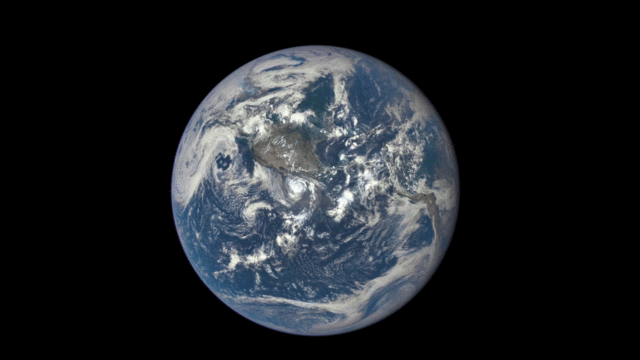| August 20, 2015 | No. 80 |
July 2015
The Palmira Station had a total of 8.59 inches of rain in the month of July. Our total for the year at the end of July was 31.48 inches. We again are experiencing the rainy season although the numbers are not large. Boquete is green and the coffee plants still look healthy and productive. The drier weather reduces some of the problems that coffee plants have during a very wet season (fungi).
Here are the totals for July 2015 for various District of Boquete areas. Note that the highest rainfall occurred again at Jaramillo Arriba as reported by Steve Sarner 13.89 inches. They seem to get more of the moisture that blows over the mountains from the Caribbean side.
Rainfall for July 2015 |
|||
Area |
Contributors |
July |
Total for 2015 |
El Santuario |
Terry Zach |
8.93 |
38.45 |
Jaramillo Abajo |
Sela Burkholder |
10.64 |
38.66 |
Jaramillo Arriba |
Steve Sarner |
13.89 |
48.28 |
Brisas Boquetenas |
Austin Perry |
8.50 |
40.65 |
Los Molinos |
Fred Donelson |
N/A |
N/A |
Los Naranjos |
Craig Bennett |
8.44 |
32.70 |
Volcancito Arriba |
Pat & Susan Farrell |
N/A |
N/A |
Valle Escondido |
Mark Huehnergard |
N/A |
N/A |
Lucero (Cielo Paraiso) |
Michael Mullin |
12.91 |
51.07 |
Palmira Arriba |
Lloyd Cripe |
8.59 |
31.48 |
n/a = not currently available |
|||
I am writing this report on August 20. So far in the month of August at the Palmira Station we have recorded less than a half inch of rain (0.45). This is certainly less than normal. Plants still look good, but we need more rain. We still have the remainder of August and all of September and October to have more rain. September and October are usually very rainy around here but this year seems different. Let's hope we get some good downpours during these months.
The latest ENSO Cycle Report states that "There is a greater than 90% chance that El Niño will continue through Northern Hemisphere winter 2015-16, and around an 85% chance it will last into early spring 2016..."
El Niño has been big in the news lately with predictions that it will be one of the biggest on record. You can read about it here. The effect on Panama will most likely be reduced precipitation/drought for most areas, but excessive in other areas (Bocas).
The IRI (International Research Institute for Climate and Society (select South America from the Region menu) is reporting the precipitation predictions for August-September-October of 2015. Note that they are predicting Below Normal precipitation for Panama (Yellow Boxes) at a 40% probability level.
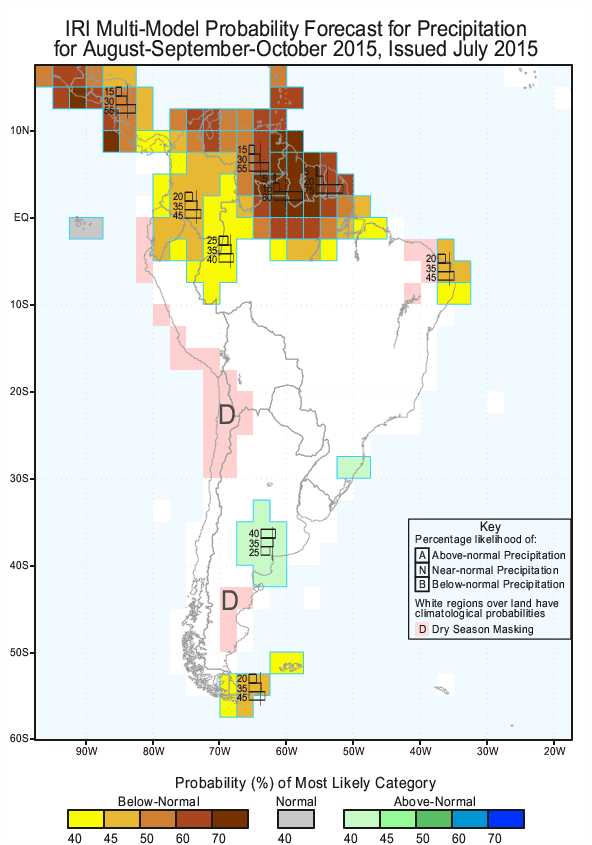
ETESA's, hydrology and meteorology section is predicting that we will have below normal precipitation during the month of August 2015. You can read their report for August 2015 in the documents section at this link.
Something appeared in the news last month that I found remarkable.
By way of background, on December 7, 1972, the crew of Apollo 17 at 28,000 miles from the earth took one of the most famous photos in history. With a camera they took a full view photo of the earth lighted by the sun. This was the first time in man's history that an actual complete photo of the earth was taken. I see it as the most significant photo of my lifetime. We saw the whole thing for the first time. You can read about the famous Blue Marble photos at this link.
Other images of the earth have been presented since that date, but none from single photographs. The images are normally made from multiple satellite passes over the earth that are then pieced together to make a total mosaic image. Over time the resolutions have gotten better and better.
On July 6, 2015 the next full image photograph of the earth since 1972 was taken and released by NASA on July 21, 2015. The photo was taken by the Deep Space Climate Observatory (DSCOVR). This spacecraft is located in an orbit of 1,500,000 km (930,000 mi) from the Earth. The camera was nearly a million miles distance from the earth. It was taken by a camera called EPIC (Earth Polychromatic Imaging Camera). The photo in 1972 was taken by a handheld camera in an orbit only 28,000 miles from the earth on Apollo 17.
The new image shows the Western Hemisphere centered over Central America. Here is the new image:
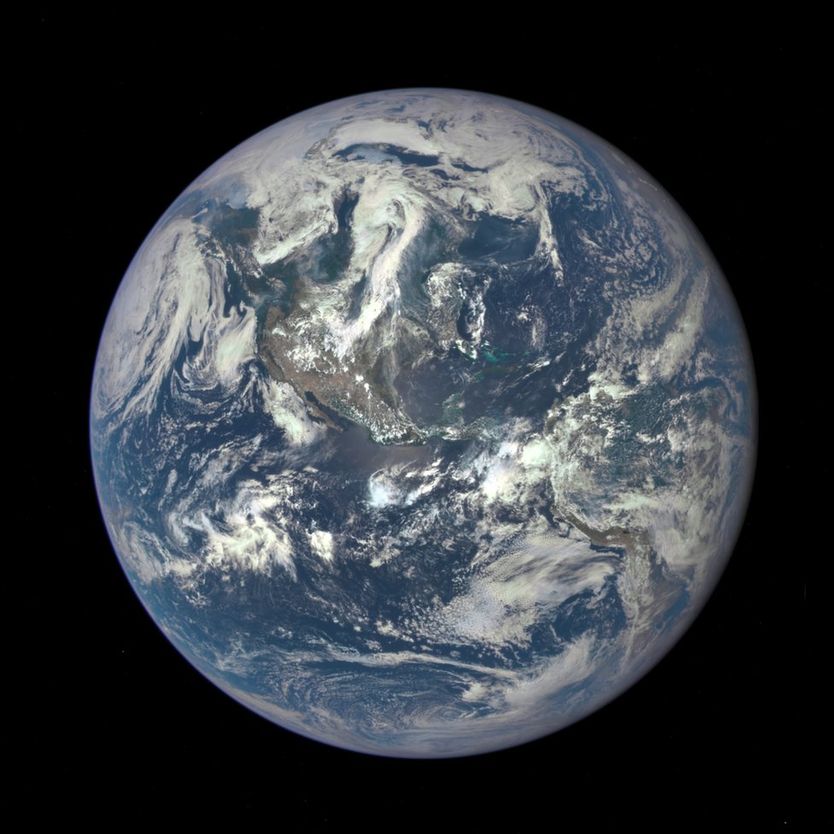
Here is the new image of the other side of the earth showing Africa, Europe and the Middle East:
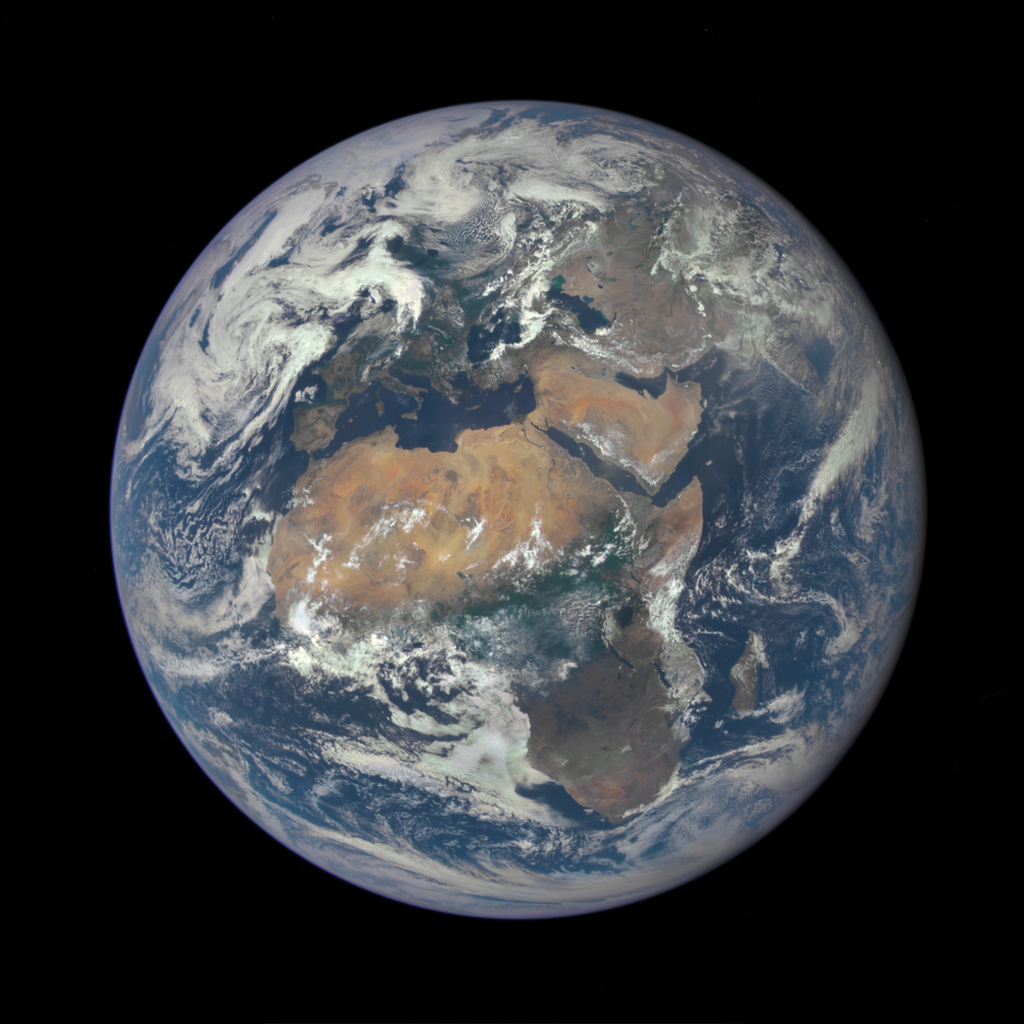
Here is a comparison of the two photos. The 2015 photo (left) and the 1972 photo (right):
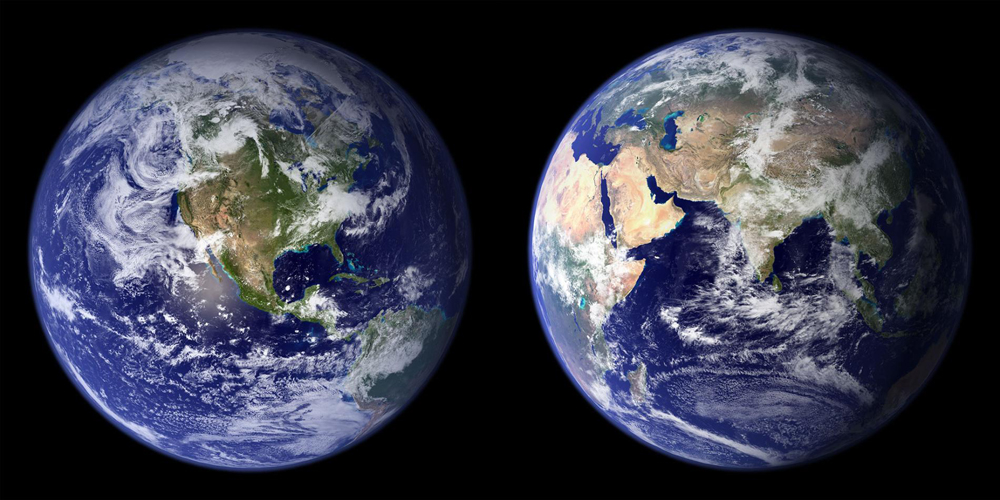
You can see another comparison of the photos here in this NYT article.
A recent EPIC video shows the moon (with its darkside toward us) passing inbetween the camera and the earth:
This is all absolutely amazing. A single photograph of our home from nearly a million miles away. A video of our moon transiting our earth. Think of the incredible science, engineering, organization and cooperation required by our fellow human beings to make all of this happen. It is mind boggling. I suggest that you not only think about the wonder of all of this but also learn more about the DSCOVR space mission. Learn about the EPIC camera.
This mission is another adventure into better understanding our sun, planet, climate and weather. The project was initiated under Vice President Al Gore's tenure. We can now monitor various aspects of our earth from a full view about a million miles away. Who knows, we may also learn something about ourselves in the process.
Lloyd Cripe

